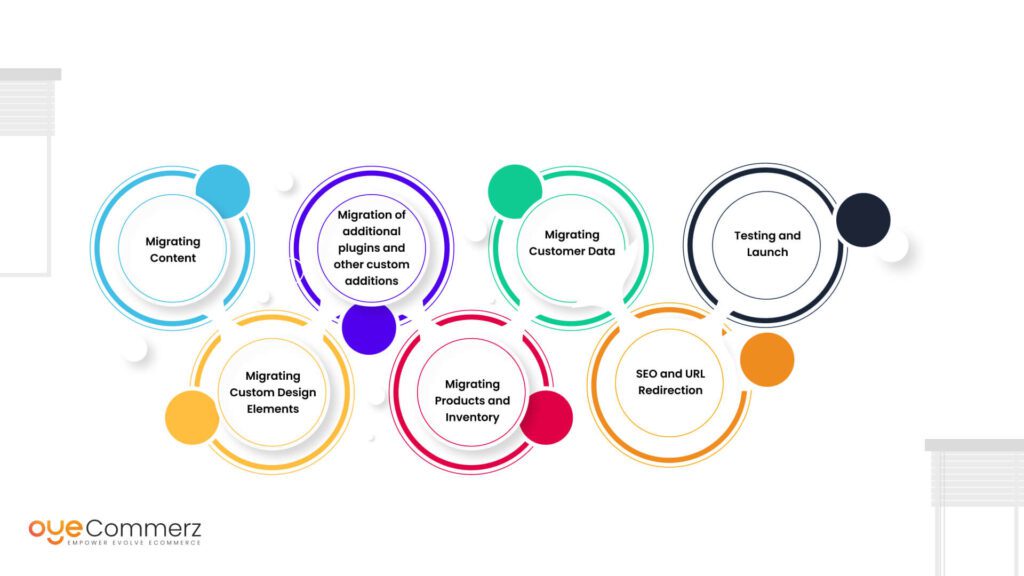Seamless WordPress to Shopify Migration: Your Definitive Guide to E-commerce Success
Shifting from WordPress to Shopify is an promising step toward streamlining your online store operations. As businesses expand, choosing a platform that supports scalability, user experience, and flexibility is essential. Shopify is widely recognized as a preferred choice for online merchants, offering unmatched adaptability, security, and ease of use. In this guide, we will delve into the transformative impact of this migration, highlight the benefits, and share practical tips to ensure a smooth move.
1. Why Switch from WP to Shopify?
The combination of WordPress and WooCommerce, continues to support countless online stores. Nevertheless, as companies expand, issues like reliance on plugins, data risks, and technical complexities can hinder growth. Shopify, designed explicitly for digital retail, eliminates these concerns with an all-in-one, user-friendly platform. Real data back this shift—Shopify hosts over 4.4 million websites worldwide, with a reported 10% boost to sales performance for numerous merchants after migration.
2. Key Benefits of Shopify for E-commerce Success
Shopify’s powerful platform caters for scaling businesses. Its notable features include:
- Effortless Design Flexibility: Shopify offers over 80 professionally designed themes.
- Integrated Tools: Features like Shopify Payments and integrated SEO save time and effort.
- Global Reach: Multi-currency support and regional customization enable businesses to reach global markets.
Additionally, Shopify delivers an availability percentage of 99.98%, guaranteeing your store remains accessible.
3. Getting Ready for Your WP-to-Shopify Transition
Prior to starting the migration process, assess your existing setup. Review inventory details, customer details, and SEO performance. Tools like Shopify’s Migration Kit or external tools help ease the transition. Create a comprehensive plan, ensuring all assets—item details, images, and blog content—are ready for seamless import.
4. The Importance of Accurate Data Migration
Transferring your data is a cornerstone of a successful platform switch. When migrating from WordPress to Shopify, prioritize:
- Inventory Shopify advanced features Details: SKU, descriptions, and categories.
- Client Information: Emails, purchase records, and custom fields.
- SEO Optimization: Retain meta tags, URLs, and redirects to avoid SEO losses.
Use tools such as LitExtension to facilitate seamless migration while reducing mistakes.
5. Tailoring Your Shopify Store to Fit Your Brand
After the move, personalizing your Shopify for small businesses Shopify store ensures it reflects your business identity. Take advantage of Shopify’s drag-and-drop editor to create layouts with ease. Shopify's templates are mobile-responsive, ensuring a seamless UX across devices—a key point, since 74% of e-commerce traffic comes from mobile visitors.
6. Maintaining SEO During Migration
Search engine optimization is crucial for maintaining your online presence during migration. Shopify is highly optimized for search engines with organized link formatting, built-in optimization tools, and seamless blog integration. Make sure you:
- Implement 301 redirects for old URLs.
- Optimize new pages with targeted phrases.
- Leverage plugins like Plug in SEO to monitor performance after the switch.
7. Post-Migration Testing
After finishing the transfer, run detailed checks.
Check: - Page load times (Shopify boasts faster speeds in contrast with WP).
- Payment integration reliability and checkout processes.
- Mobile responsiveness.
Testing ensures your store provides a seamless shopping journey from the start.
8. Case Study of a Successful Migration
One such migration success story is Gymshark, a sportswear company that transitioned to Shopify. After the switch, the company experienced a 60% increase in mobile sales and significantly lowered site downtime. This highlights the potential of Shopify in driving e-commerce growth.
9. Overcoming Common Migration Issues
Migration is not without obstacles, such as information accuracy and reconfiguring custom functionalities. However, Shopify’s extensive assistance and external professionals simplify the process. Partnering with experienced Shopify developers ensures a smooth transition.
10. Starting Your Journey with Shopify
Switching from WordPress to Shopify marks a forward-thinking decision to e-commerce. By addressing scalability, simplifying management, and enhancing the customer experience, Shopify enables companies to succeed in challenging industries.
Final Thoughts
Transitioning from WP to Shopify is a strategic move that can significantly boost your e-commerce success. With a well-structured strategy, the appropriate resources, and expert support, you can unlock new success milestones.
Excited to start the journey? Let’s discuss how our Shopify migration services can transform your e-commerce platform. Get in touch today, or ask yourself: Is it time to seize Shopify’s advantages for your store?
